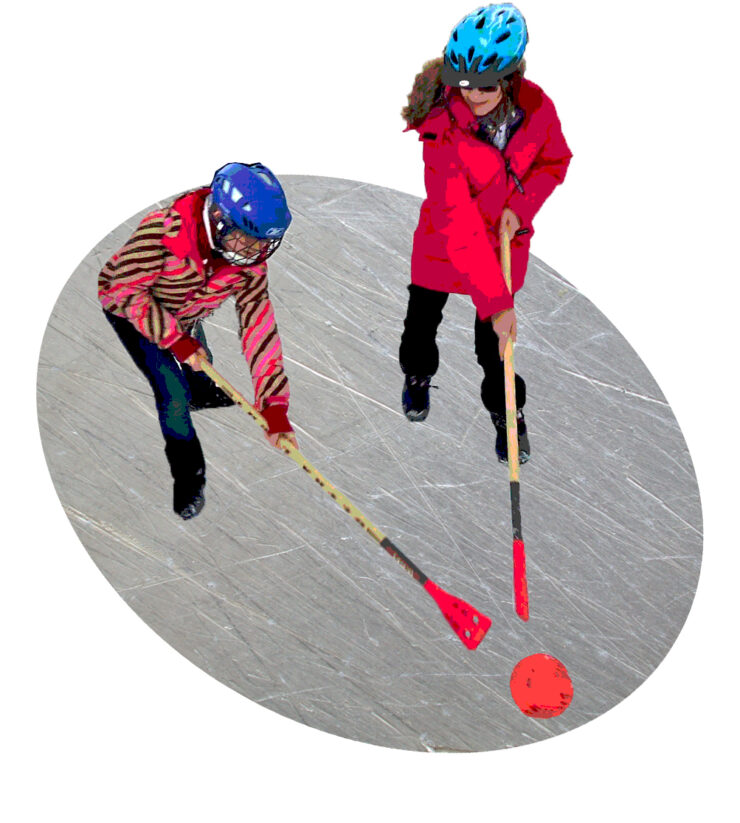
U of O student talks about the growth of broomball
EVERY CANADIAN KNOWS about hockey, our national sport played on ice with a puck and a stick, but how many people know a thing about hockey’s counterpart, broomball?
Founded in Canada between 1909 and 1910, this sport is played on a hockey rink, but with a rubber broom, ball, and rubber shoes instead of skates. While it may not be the most popular sport around, broomball has grown considerably over the last few years. Younger and younger athletes are beginning to play the sport, including fourth-year U of O student and sports therapist Sarah Achtereekte.
“I got into broomball because of my parents,” said Achtereekte in an interview with the Fulcrum. “I started when I was four or five. My feet couldn’t actually fit in the shoes so my mom gave me extra socks so I could start playing early.”
The rules of broomball are similar to hockey. The goal of the game is to get the ball into the opposing team’s net. The only two rule-related differences between the sports are the location of the offside lines—for hockey it’s the blue line; for broomball it’s the red—and there is no highstick in broomball—hitting the ball above your shoulder results in a penalty.
Achtereekte plays on an elite team in the Eastern Ontario region. Broomball tournaments are scheduled throughout the year, with the teams competing to go to provincials then nationals. The season for elite teams is quite different from that of other broomball teams, as the squad must make it to provincials the year before in order to qualify for the national competition.
Achtereekte explained she doesn’t mind the system because if offers her team an opportunity to develop without worrying about protecting a championship.
“This year there are no teams from Eastern Ontario going to nationals; it’s the western team that is going. But our team is younger so we have time to grow,” said Achtereekte. “Right now, because we aren’t going anywhere, playing broomball is more of a health benefit for me this year.”
“Plus, because I’m a student, the sport is great for stress,” she joked.
Broomball was taken under consideration for the the 2010 Olympic Games, but didn’t pass the bar. Achtereekte thinks the Olympic consideration is indicative of new popularity for broomball.
“Since I’ve been playing, [the sport] has gotten pretty big. I mean, you have teams from Ontario, and just in eastern Ontario you can usually play against three or four good teams and a couple of [exhibition] teams, but I don’t think it’ll get close to hockey,” she said. “There are still a bunch of people who don’t know about the sport.”
She also feels that broomball has the potential to become widely accepted among families because it is more cost efficient than sports like hockey.
“It’s a lot cheaper than hockey and the equipment [costs] practically nothing. Registration fees are getting a little higher … [but] it is less time consuming than hockey. I don’t know exactly what is being done for advertising, but it seems to be getting out there.”
Achtereekte has no doubt that the sport will gain popularity in years to come.
—Katherine DeClerq



